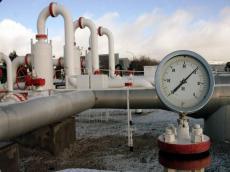Today.Az » Business » Volume of natural gas transportation via Azerbaijan's main gas pipelines up by 8 pct in Jan-Sep
20 October 2020 [16:20] - Today.Az

By Azernews
By Ayya Lmahamad The volume of natural gas transported through Azerbaijan’s main gas pipelines increased by 8 percent during the period of January-September 2020, local media has reported. During the reporting period, some 21.5 billion cubic meters of gas was transported through Azerbaijan’s main gas pipelines. The Baku-Tbilisi-Erzurum pipeline (South Caucasus gas pipeline) accounted for 40.6 percent of the total volume of gas pumped through the main pipelines. Thus, during the reporting period, some 8.7 billion cubic meters of gas has transported this pipeline, which is by 17.8 percent more than in the corresponding period of 2019. Moreover, during the reporting period, the volume of oil pumped through Azerbaijan’s main oil pipelines decreased by 9.5 percent. Some 26.5 million tons of oil were transported via the main oil pipelines of the country during the first nine months of 2020. Baku-Tbilisi-Ceyhan accounted for 79.6 percent of the total volume of oil transportation. Thus, 21.1 million tons of oil were transported through Baku-Tbilisi-Ceyhan, which is by 10.6 percent less than in the same period of 2019. Additionally, 170 million barrels of Azerbaijani oil transported from Ceyhan terminal. Earlier it was reported that during the reporting period, Azerbaijan increased natural gas production by 5.9 percent or 1.5 billion cubic meters, compared to the same period of 2019. Thus, in the first nine months of 2020, the country produced 27.5 billion cubic meters of gas. Gas sales abroad amounted to 9.6 billion cubic meters, which is by 15.7 percent more than in the same period of 2019. Likewise, some 26.1 million tons of oil, including condensate, were produced in Azerbaijan in the first nine months of 2020, which is by 2.1 million tons less than in the same period of 2019. In addition, some 21.5 million tons of oil, including condensate, were exported in the first nine months of 2020, which is by 1.9 million tons or 8 percent less than in the corresponding period of 2019. The South Caucasus Pipeline was built to export Shah Deniz gas from Azerbaijan to Georgia and Turkey. The pipeline starts from the Sangachal terminal near Baku. It follows the route of the Baku-Tbilisi-Ceyhan (BTC) crude oil pipeline through Azerbaijan and Georgia to Turkey, where it is linked to the Turkish gas distribution system. The pipeline has been operational since late 2006 transporting gas to Azerbaijan and Georgia, and starting from July 2007 to Turkey from Shah Deniz Stage 1. The 42-inch diameter gas pipeline runs through the same corridor as the Baku–Tbilisi–Ceyhan pipeline until Erzurum, where BTC turns south to the Mediterranean. The Baku-Tbilisi-Ceyhan pipeline is a transport line for Azerbaijani oil from the Caspian Sea to the port of Ceyhan in Turkey, and then to European markets via the Mediterranean Sea. The construction of the Baku-Tbilisi-Ceyhan pipeline started in 2002 in Baku. On May 25, 2005, the Azerbaijani section of the pipeline was opened, on October 12, 2005, the opening of the Georgian section was held. On July 13, 2006, the official opening ceremony of the Baku-Tbilisi-Ceyhan oil pipeline took place in Turkey. The total length of the pipeline is 1,768 km, of which 443 km pass through the territory of Azerbaijan; 249 km to Georgia; 1076 km to Turkey. The projected capacity is 50 million tons of oil per year or one million barrels per day. Light oil produced at the Azeri-Chirag-Gunashli field is transported via Baku- Tbilisi- Ceyhan.
|